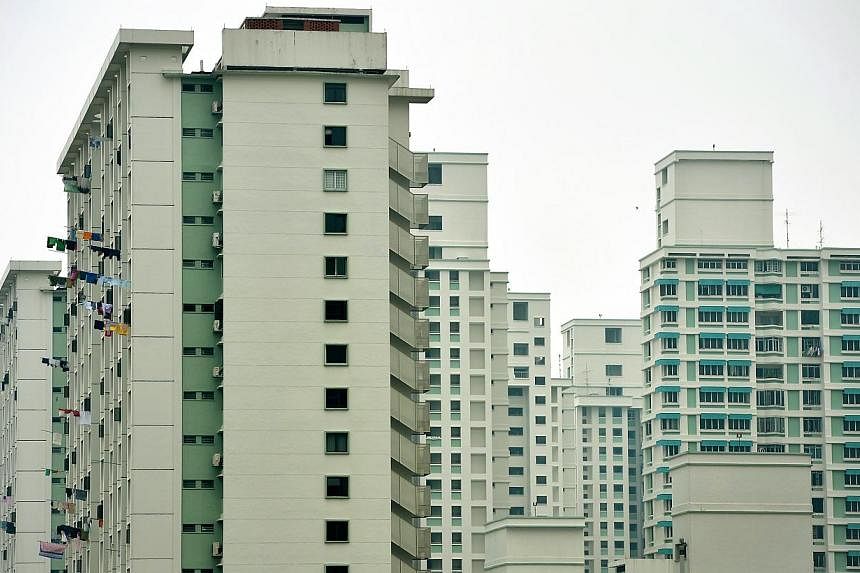SINGAPORE - The revised Housing Board (HDB) resale price index will take into account more differences between flats - from which storey a flat is on, to how close it is to an MRT station - and strip away their effects to get a clearer picture of price changes over time.
Flats on higher floors, for instance, tend to command higher resale prices. If more of such flats are sold in a given quarter, overall resale prices might seem to have risen. But under the new method, this 'storey height' effect will not come into play, ensuring that overall price changes only reflect market conditions.
The updated method of tracking HDB resale price changes will also include all resale transactions. Currently, only a representative set of HDB towns is used in the calculation.
Details were released on Tuesday, after National Development Minister Khaw Boon Wan first mentioned the upcoming change last Wednesday. The new method of computing the index will be used starting from the next release of quarterly figures on Jan 2.
In his blog post last week, Mr Khaw noted that the existing method "may not adequately reflect the resale market", which now sees more flat types, more transactions in newer towns, and flats of a larger age range compared to when the method was last revised in 2002.
"It is therefore timely to review the RPI methodology to better capture price changes over time, and control for the variations in attributes of the resale flats transacted," he added.
To create the existing index, the resale market is divided into segments by flat type and region, yielding groups such as 'three-room flats in the West' or 'four-room flats in the North'. Average resale prices are calculated for each category, and then aggregated to derive the overall index.
The new method divides the market according to flat type, then estimates a hedonic regression for each group. This mathematical analysis controls for flat attributes such as age and distance from amenities. It separates out their effects on resale prices, so as to get a final value for the pure price change over time.
The resulting price changes for each flat type are then aggregated to get the overall index.
The revised method also aggregates price changes differently. Previously, the different categories were weighted using a 12-quarter moving average of transaction volume.
In the new method, weights are based on the total value of transactions over five quarters. The weights will be updated every three years instead of every quarter, allowing for more stability.
The HDB has back-tested the index by using the new method on 2014 data. The new method still shows a general downward trend, though the price falls are slightly larger. For instance, the third quarter of 2014 saw a 1.7 per cent fall in prices according to the old method, but a 1.8 per cent fall under the new method.
Past values of the resale price index will not be re-calculated using the new method. But the index will adopt a new base period of the first quarter of 2009, instead of the existing fourth quarter of 1998.
This does not affect any of the percentage changes over time, only the absolute resale price index values for each point in time.


